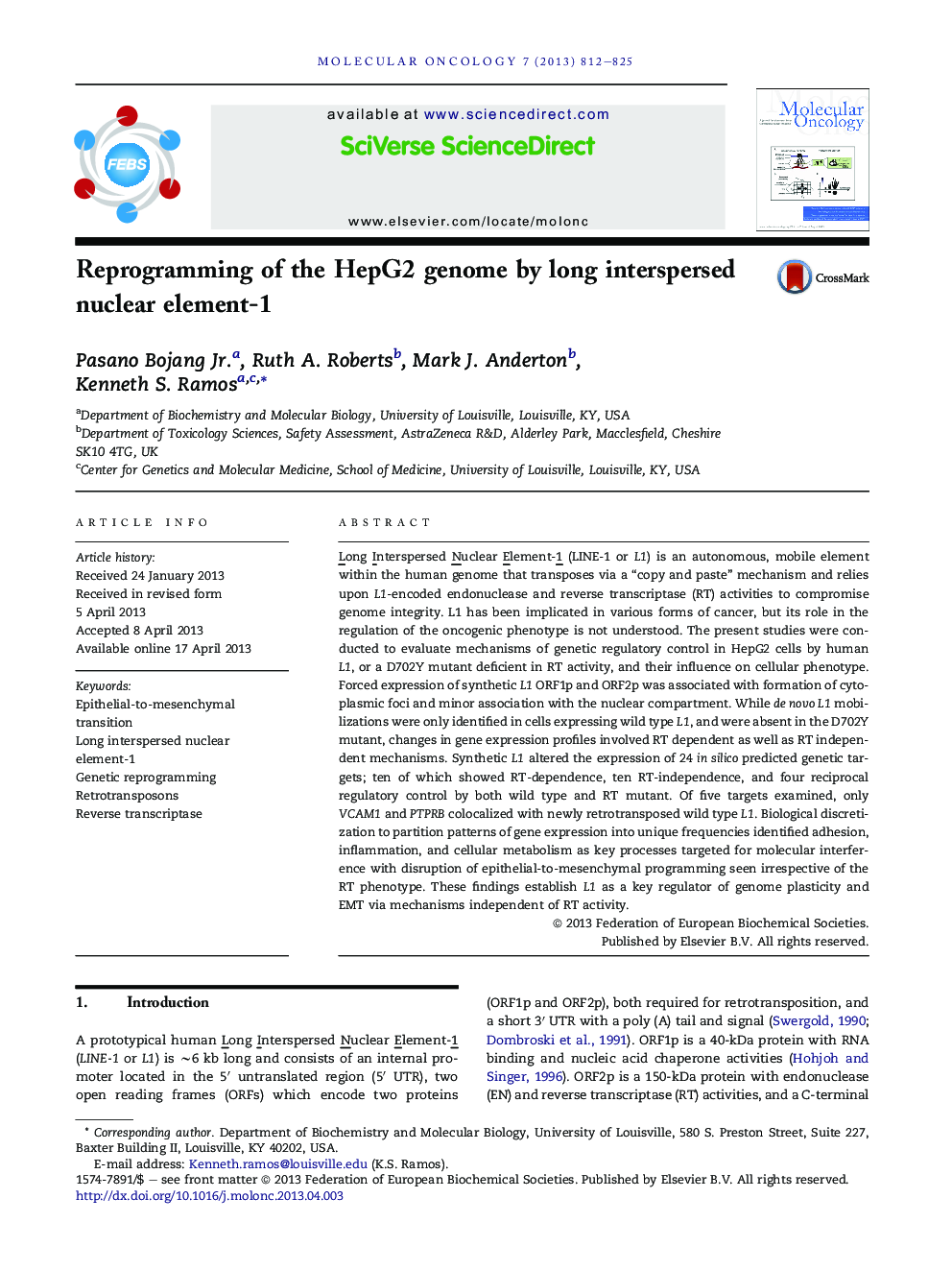| Article ID | Journal | Published Year | Pages | File Type |
|---|---|---|---|---|
| 2145772 | Molecular Oncology | 2013 | 14 Pages |
•L1 reprograms the HepG2 genome via mechanisms that are independent of reverse transcriptase activity.•Biological discretization identified adhesion, inflammation, and metabolism as processes targeted for molecular interference.•The findings established L1 as a regulator of genome plasticity via mechanisms not directly coupled to retrotransposition.
Long Interspersed Nuclear Element-1 (LINE-1 or L1) is an autonomous, mobile element within the human genome that transposes via a “copy and paste” mechanism and relies upon L1-encoded endonuclease and reverse transcriptase (RT) activities to compromise genome integrity. L1 has been implicated in various forms of cancer, but its role in the regulation of the oncogenic phenotype is not understood. The present studies were conducted to evaluate mechanisms of genetic regulatory control in HepG2 cells by human L1, or a D702Y mutant deficient in RT activity, and their influence on cellular phenotype. Forced expression of synthetic L1 ORF1p and ORF2p was associated with formation of cytoplasmic foci and minor association with the nuclear compartment. While de novo L1 mobilizations were only identified in cells expressing wild type L1, and were absent in the D702Y mutant, changes in gene expression profiles involved RT dependent as well as RT independent mechanisms. Synthetic L1 altered the expression of 24 in silico predicted genetic targets; ten of which showed RT-dependence, ten RT-independence, and four reciprocal regulatory control by both wild type and RT mutant. Of five targets examined, only VCAM1 and PTPRB colocalized with newly retrotransposed wild type L1. Biological discretization to partition patterns of gene expression into unique frequencies identified adhesion, inflammation, and cellular metabolism as key processes targeted for molecular interference with disruption of epithelial-to-mesenchymal programming seen irrespective of the RT phenotype. These findings establish L1 as a key regulator of genome plasticity and EMT via mechanisms independent of RT activity.
